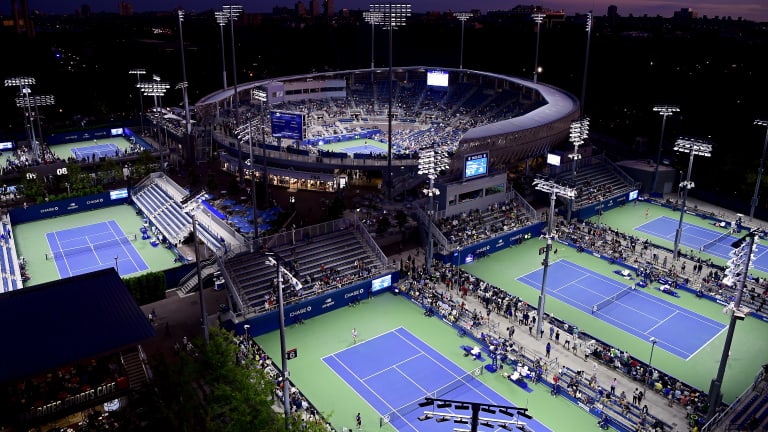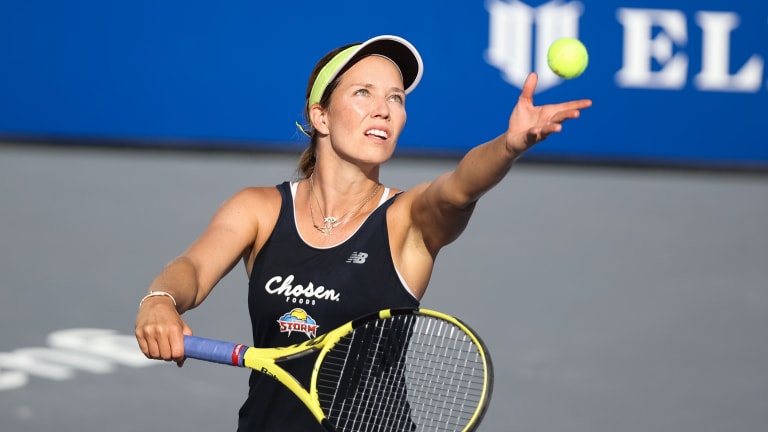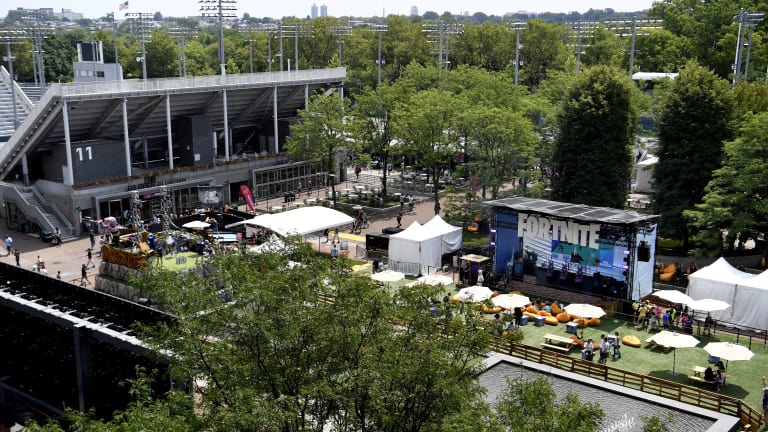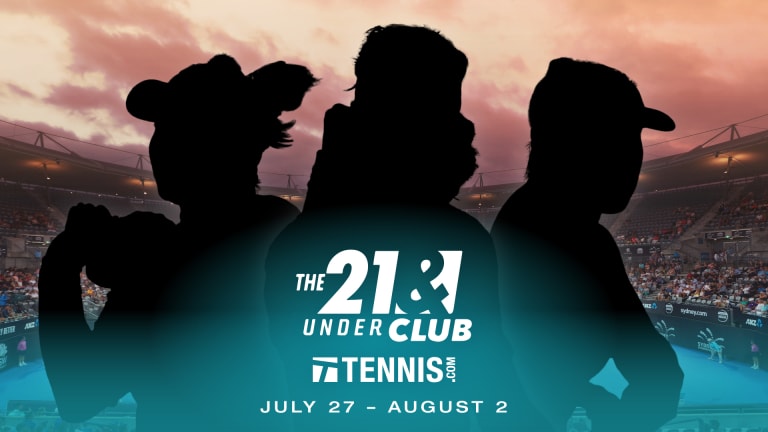The Rally: What can the US Open learn from tennis' teachable moments?
Jul 27, 2020Australia at Last: Reflections on a first trip to the AO
By Jon Levey Jan 29, 2025Alexander Zverev must elevate his game when it most counts—and keep it there
By Peter Bodo Jan 27, 2025Jannik Sinner draws Novak Djokovic comparisons from Alexander Zverev after Australian Open final
By Steve Tignor Jan 26, 2025Alexander Zverev left to say "I'm just not good enough" as Jannik Sinner retains Australian Open title
By Matt Fitzgerald Jan 26, 2025Jannik Sinner is now 3-0 in Grand Slam finals after winning second Australian Open title
By TENNIS.com Jan 26, 2025Taylor Townsend and Katerina Siniakova win second women's doubles major together at the Australian Open
By Associated Press Jan 26, 2025Madison Keys wins her first Grand Slam title at Australian Open by caring a little bit less
By Steve Tignor Jan 25, 2025Henry Patten, Harri Heliovaara shrug off contentious first set to win Australian Open doubles title
By Associated Press Jan 25, 2025Aryna Sabalenka takes a rare loss in Australian Open slugfest
By Pete Bodo Jan 25, 2025The Rally: What can the US Open learn from tennis' teachable moments?
From Novak Djokovic to Alexander Zverev to Danielle Collins, tennis has had plenty of mistakes demonstrating that nobody should feel they are above the rules.
Published Jul 27, 2020
Advertising
Steve Tignor and Joel Drucker discuss what the US Open can learn from tennis' teachable moments, and what opportunities may lay ahead for stars like Serena Williams.
Hi Joel,
We’ve heard that the pandemic will spur all kinds of innovations, but I’m not sure that putting cardboard cut-outs of fans in the bleachers at sporting events will go down as an historic breakthrough. Would you want to have a photo of your smiling, or screaming, face in the crowd at a tennis tournament?
But this is where we are in the summer of 2020. Increasingly, it’s hard to tell whether we’re getting closer to bringing sports back or farther away.
On the plus side, World TeamTennis (WTT) has put on a safe event at The Greenbrier in West Virginia so far. There are encouraging early signs that the bubbles created by the NBA and MLS in Florida are holding, which should be good news for the US Open. Last week Major League Baseball had its long-delayed Opening Day. Next Monday, the WTA will kick off its 2020 season, for real, in Palermo, Italy. The week after that, Serena Williams is scheduled to return to the court for the first time at a tournament in Kentucky.

The Rally: What can the US Open learn from tennis' teachable moments?
© Getty Images
Advertising
Getty Images
On the minus side, the Citi Open, which was set to begin the summer circuit in the U.S., has been cancelled, as have all fall tournaments in China. Travel restrictions—from continent to continent, country to country, and even state to state—are proving difficult to overcome. The biggest problem may be the U.S. itself, which is digging a deeper COVID-19 hole even as much of Europe and Asia opens up. Can an international tennis tour function without a safe and functioning United States?
(Editor's Note: after publishing this story, it was reported that the Miami Marlins organization has suffered a significant COVID-19 outbreak. Following four confirmed cases among players Sunday, it was reported that one third of the traveling roster (11/33) has now tested positive, along with two coaches. Two games scheduled for this evening, including Miami's home opener, were subsequently canceled).
For our purposes, the big question is whether the US Open will, or should, be played in New York next month. Again, the signs are conflicting. The state’s governor, Andrew Cuomo, wants the Open to happen, but we also learned last week that another major international event normally held in New York in late summer, the United Nations General Assembly, has been canceled.
As a fan, it can be hard to know how to feel about watching sports, or even wanting to watch sports, during a pandemic. Are we asking athletes to take life-threatening risks for our entertainment? Does the need to restart professional leagues expose them as unadulterated money-making ventures? For the most part, having seen what happened in NYC this spring, and then at the Adria Tour in Croatia, I’ve favored caution. The fastest way back to normality for all of us is to contain the virus. But I’ve been encouraged by WTT’s success so far. Maybe bubbles, like the one the US Open is proposing, can work.
Where do you stand on reopening, Joel?
Hi Steve,
Months ago, my thinking was that one scenario would be to simply have no pro tennis at all until a vaccine had been administered and the pandemic could be considered over. But that was ill-informed and even naïve on my part. All sorts of businesses and activities have been reopening with small steps, with every intention of being as safe as possible. So why not the same with tennis?
The WTT effort looks pretty darn good, with lots of compelling tennis and the special, collective passion of a team event. Just as is the case for us viewers, a lot of the players sure seem grateful simply for the chance to compete and enjoy the company of one another. This shows, I suppose, how even for professional athletes who are paid to tear one another apart, sports has a social component—the recognition that the opponent is also in some mysterious but meaningful way also a friend. I recall the time Yannick Noah once told me about the likes of such rivals as John McEnroe and Jimmy Connors, “Of course we all love each other, but we just don’t want to admit it.” It will be interesting to see how this spirit of gratitude and connection plays out in the months and even years to come.
It also appears that WTT has taken tremendous steps to ensure the safety of players, officials and all others who occupy its bubble. I’m completely baffled by Danielle Collins—both for deciding she could leave and then, perhaps even more jarring, asserting that it was acceptable for her to do so.
Golly, from the minute WTT was announced, everyone was aware that these were the terms.

The Rally: What can the US Open learn from tennis' teachable moments?
Advertising
Ryan Loco
From my vantage point, Collins engaged in what I’ve long considered classic tennis-player behavior, back to how kids and their families often conduct themselves in the junior tennis world. It’s the mindset of a participant in an individual sport who lacks a sense of any meaningful connection to others. Though of course the example I’m going to cite is far, far less significant, what Collins did reminds me of people who play on USTA league teams and then leave once their own match is completed. Can you imagine a basketball player doing that once he’s fouled out of the game?
I bring up what Collins did not strictly to admonish her, but more as a cautionary note for such events as the US Open. My strong hope is that not a single player goes rogue and does something like go to a bar with a buddy from outside the bubble, or attend a party, or does anything else that could potentially compromise the health of everyone else who is complying with a highly visible set of rules.
As far as the US Open goes, the need for people from other states to get to New York and quarantine adds a wrinkle. It will be fascinating to see how it plays out. Either way, though just over a month away, I’m thinking there will be many more twists and turns in the coming weeks.
Since you live in New York, Steve, what’s your local view on the US Open?
Joel,
From the point of view of someone who lives in Manhattan—which, as you know, is a semi-world away from Flushing Meadows in Queens—it’s possible to imagine the Open coming to New York this year and not making much of a dent on the city at large. No fans will be flying in or filling up local restaurants, the players will either be at the site or at their hotels, and the tabloids here will likely struggle to find any scandalous material on them.
Judging by WTT and the NBA so far, it seems that everything depends on the integrity of the bubble. You make a good point that this integrity depends on everyone inside the bubble, including the players, doing the right things. Tennis has had a series of teachable moments this summer—the Adria Tour, the All American Cup in Atlanta, Alexander Zverev’s quarantine jailbreak, and now the Collins expulsion. You’d like to think the sport and its players would have learned something from all of this. The first lesson should be that no one is above the rules.
Since we can only talk about the coronavirus for so long without throwing up our hands and saying “who knows?”, let me move on to a little old-fashioned tennis talk. Assuming the WTA’s kickoff tournaments are actually held next month in Palermo—Simona Halep pulled out Sunday, citing pandemic-related concerns—and Serena Williams will return at the Top Seed Open in Lexington, K.Y. Whether she ends up playing this tune-up event or not, Serena will be a central figure in tennis’s reopening. She’s going to turn 39 in September, and she still wants that 24th (and 25th) major title. She says she’s ready to play the Open, which may be the best opportunity she’ll have to win, or even enter, a major event for a while.
What are you looking forward to seeing, if and when tennis returns, Joel? And does the Open give Serena an opening?
Serena commits to playing the 2020 US Open:
The Rally: What can the US Open learn from tennis' teachable moments?
Advertising
Steve,
First, I’d unquestionably say that Serena has a terrific shot at winning the US Open. Given how little all the players have competed this year, experience, adaptability and that competitive X factor will all be exceptionally important. Who’s done that better and longer than Serena? So naturally, she’s among those I’ll be intrigued to see.
But first, I’m looking forward to taking in the entire venue, devoid of so much of that distinctive New York energy, right down to the pretzel vendors, the buzz and hum of the milling crowds and those lively night sessions.
It’s amazing to ponder the world’s biggest tennis stadium without any fans. Once upon a time in Flushing, I had a chance to hit inside Arthur Ashe Stadium early in the morning. Without any spectators, its tremendous size loomed even larger, just thousands and thousands of seats, row after row after row, going so high in the sky. I’m fascinated to see how that empty stadium will affect the players—visually, emotionally, even as an auditory experience.
At first, everything from the stadium to the grounds will likely be jarring for everyone, be it the lack of applause to the overall austerity and, yes, concerns about health.

The Rally: What can the US Open learn from tennis' teachable moments?
© Getty Images
Advertising
Getty Images
Once we’ve all taken in what the venue looks like, I’m most excited to witness the actual competition. No matter what the playing level, tennis is always different when there’s something at stake—the concentration, the intensity, the potential consequences. Say what we will about process and being in the moment, nothing ups the ante more than the possibility of a significant outcome. These high stakes are what make tennis’ Grand Slam events so compelling.
With those big rewards in mind, I think the 2020 US Open will be officially christened when there’s a major upset in the making during the first four days of the tournament. It will be remarkable to see what shape that takes. We’re used to seeing the crowd play a big role in these kind of matches, be it cheering for the favorite or inspiring the underdog. So now, how does that play out in front of no one? Or is at heart, all about the tennis?
And how in this environment will we regard a player being cheered on by his small entourage? Is that indeed a form of coaching?
One other intriguing quality: Given that it’s likely that a number of players will not be coming to New York, many lower-ranked competitors will make their way into the field. Make no mistake, anyone in the top 400 has some darn good ball-striking skills, so I’ll be intrigued to see how some of those matchups go.
I’m also crossing my fingers that injuries are minimal. If the good news is that players are fresher than usual this time of year, the bad news is that they lack the fitness that can only come through extensive competition.
Between the biosphere-like atmosphere, the lack of fans and the long-awaited return to competition, this year’s US Open will be like none ever—some sort of mix between science fiction and a sporting classic. I hope most of all that everyone stays safe and healthy.

The Rally: What can the US Open learn from tennis' teachable moments?
Advertising
Monday, July 27: Sofia Kenin | Monday, July 27: Elena Rybakina | Monday, July 27: Alex de Minaur, Dayana Yastremska, Casper Ruud | Tuesday, July 28: Stefanos Tsitsipas | Tuesday, July 28: Thiago Seyboth Wild